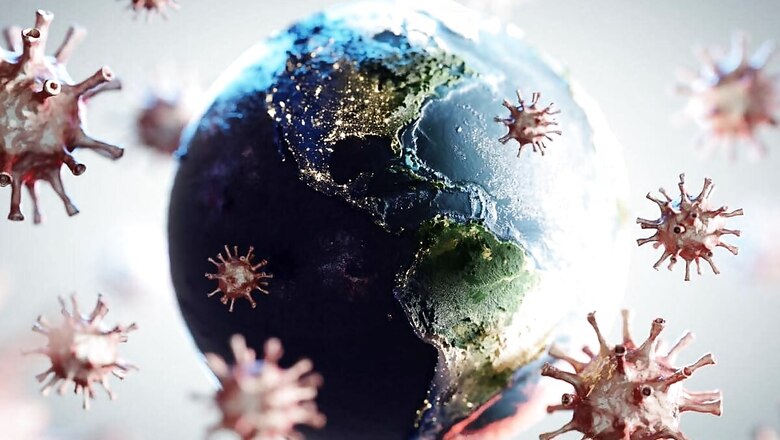
views
An animal infection is likely to be the most probable reason behind the origins of the novel coronavirus, according to a group of over 20 scientists, who stated that coronavirus cases traced to markets in Wuhan, China, reflect the spread of SARS seventeen years earlier, Bloomberg reported.
In a paper, yet to be peer-reviewed and published on Wednesday, the scientists said the epidemiological history of the novel coronavirus is comparable to previous outbreaks of coronaviruses associated with animal markets.
The paper, reviewing the science behind the genesis of the novel coronavirus, was authored by Edward Holmes, Andrew Rambaut and 19 other researchers. It outlines a detailed explanation of the novel coronavirus’s genetic signatures, its early epidemiology and research done in Wuhan.
The authors, who also include Nobel Prize winner Peter Doherty and Wellcome Trust Director Jeremy Farrar, also dismissed the popular perception that the novel coronavirus originated from laboratories. They said the perception originated from the fact that the virus was first detected in a city that has the maximum biosafety labs that study coronaviruses and other lethal infections, such as Ebola.
The authors from Sun Yat-Sen University and Guangzhou University said the lab theory is highly unlikely, compared with “the numerous and repeated human-animal contacts that occur routinely in the wildlife trade”.
Note of Caution
Sounding a note of caution, the authors also said that the failure to detect the virus’s actual genesis might leave the human race vulnerable to future outbreaks.
Wuhan is the largest city located in central China, housing several animal markets. It is a primary centre for travel and commerce, the authors said. The association between the novel coronavirus and Wuhan, therefore, more likely mirrors the fact that pathogens often require congested areas to become more lethal.
Based on epidemiological data, the Huanan wholesale seafood and produce market in Wuhan was an early epicentre of the SARS-CoV-2 infections, the researchers said.
Two of the three first coronavirus cases were linked to the market that sold live, wild animals, as were 28% of all cases reported in December 2019. In total, as many as 55% of the cases during that month had an exposure to either the Huanan or another market in Wuhan.
Though no bat reservoir nor intermediate animal host for SARS-CoV-2 has been found, the transmission of the virus from one animal to another is likely to go undetected, the paper stated.
It also said that the novel coronavirus evolved in a host environment “highly similar, if not identical,” to a bat coronavirus that’s considered the closest match to SARS-CoV-2. The scientists further said that it is nearly impossible to duplicate the novel coronavirus under laboratory conditions.
Read all the Latest News, Breaking News and Coronavirus News here.




















Comments
0 comment